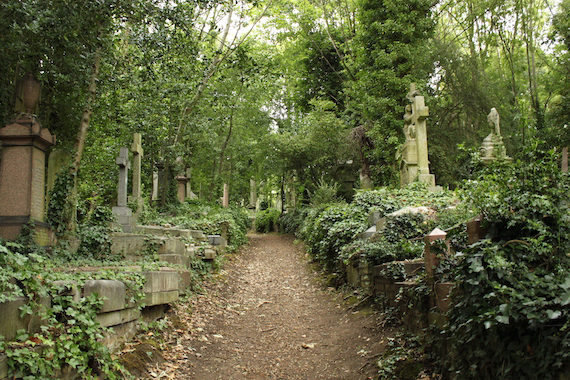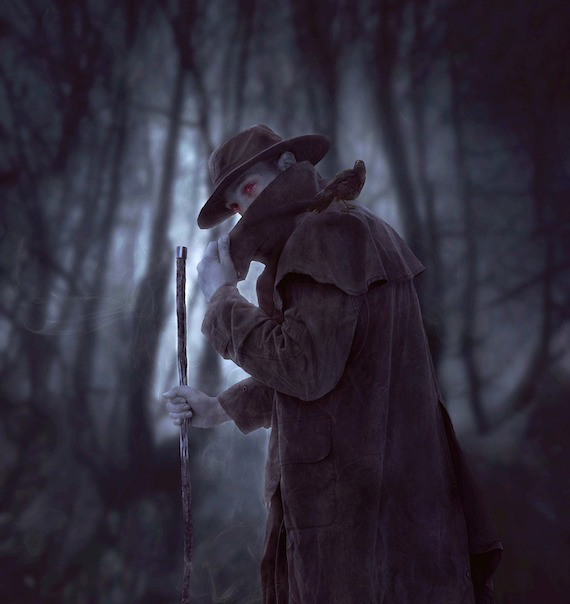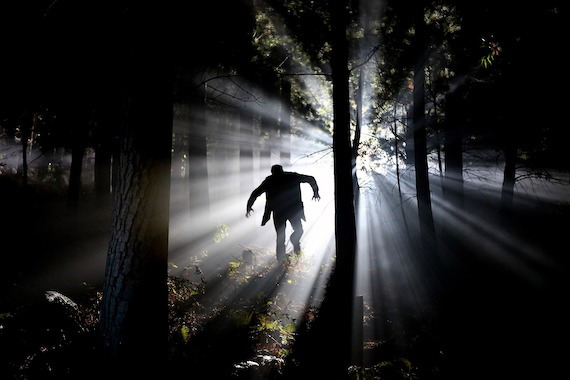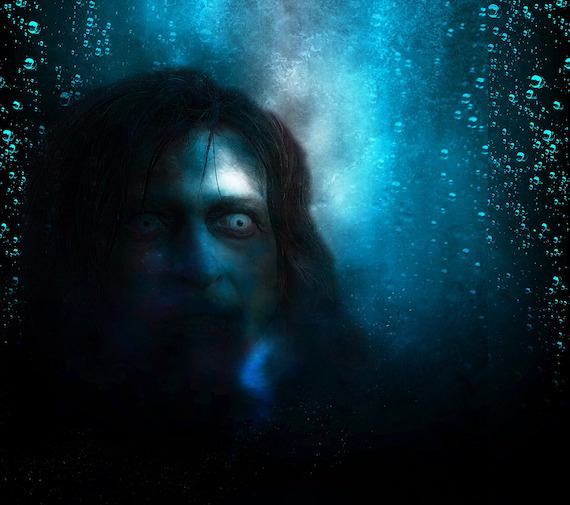A Creepy Cemetery, a Vampire, and the Bizarre Feud Between Two Wizard Vampire Hunters

Are vampires real? Rather than just fictional denizens crawling out of legend into the realm of horror novels, TV, and films, is there perhaps something to any of it? There have long been stories and cases of real vampires prowling amongst us, and it has become a seemingly absurd, yet very real category of paranormal phenomena over the years. One case comes to us from an old creepy cemetery in the country of England, which would spawn a slew of reports concerning a supposed real vampire lurking among the graves, and which would spark a bizarre, decades-spanning war between two self-professed experts and magic using sorcerors.
The story here begins at a place called Highgate Cemetery, in north London, England. The cemetery has a long history, initially designed by architect Stephen Geary, it was opened in 1839 as part of a plan to provide seven large, modern cemeteries around the outside of central London due to an overcrowding of corpses in the inner-city cemeteries, which was seen as a health hazard. It quickly became a popular and fashionable place to be buried, and everyone who was anyone wanted to be interred there, leading to the creation of a wealth of elaborate and ornate Gothic tombs, gravestones, and buildings throughout the grounds. The sprawling cemetery also became known for its plentiful trees, shrubbery and wildflowers, as well as birds and small animals such as foxes, which would lead to its de facto status as a nature reserve. In present day, there are approximately 170,000 people buried in around 53,000 graves across the West and East Cemeteries, and it is on the Register of Historic Parks and Gardens and is one of the “Magnificent Seven” cemeteries of London. It was also once said to be the haunt of an actual vampire.

Back in the 1960s, the cemetery had fallen somewhat into a state of disarray and disrepair. Large swaths were overgrown, chaotic weed-choked feral places and many of the spooky gothic buildings had seen better days. It was an eerie place to be sure, said to be haunted by numerous specters and a place for people to dare each other to go into, and it had even served as a setting for several lurid horror movies with titles like From Beyond the Grave and Taste the Blood of Dracula, so it is perhaps not surprising that it should gather about itself some pretty strange tales. In March of 1969, the British Psychic and Occult Society began receiving numerous reports of a “tall dark man” wearing a tall hat and with “glaring eyes,” sometimes described as red or glowing, stalking the tombs and variously said to be able to move at superhuman speeds, make giant leaps, or vanish into thin air at will.
In one report, two adolescent girls walking near Swain’s Lane claimed to have seen a vampire rising from a grave near the Highgate Cemetery’s north gate, in another a woman claimed to have been grabbed by the apparition with a “cold, clinging hand,” that had left a mark and drained her of energy, and in yet another a man claimed that he had been hypnotized by the mysterious figure and found himself disoriented and unable to find his way out of the cemetery. On top of these reports and many others like them, people were claiming to find dead animals scattered across the cemetery, sometimes drained of blood, and as such stories hit the newspapers and tabloids, their spectacular, sensationalized coverage was fueling rumors that this mysterious black clad individual was a vampire. Enter David Farrant.
Farrant was an investigator for the British Occult Society and self-styled Wiccan priest, spiritualist, spirit medium, and wizard who had taken an interest in the reports and launched an investigation. At first he thought it to be the work of some sort of Satanic black magic cult, the dead animals sacrifices for dark rituals, but as he delved deeper he would reach a different conclusion. During the course of his investigation, he claimed to have found not only evidence of Satanic activity in the cemetery, but also that the mysterious black figure was a supernatural entity, possibly a ghost or demon. He would even claim to have had his own personal encounter with the specter, saying that he had seen it floating above the ground. Before long, Farrant was enthusiastically telling the media about his findings and his personal brush with the entity, which at this point he was convinced was a ghost rather than a traditional vampire. This is where Seán Manchester would come into the picture.

Manchester is a British author and self-proclaimed exorcist and bishop of the Old Catholic Church, as well as the president of the British Occult Society (which he founded), and also a self-professed magic user and vampire hunter who incidentally claims to be a direct descendent of Lord Byron and also related to King Arthur. At the time he had been doing his own investigation into what was now being called the “Highgate Vampire,” and had come to a different conclusion than Farrant. In Manchester’s opinion, this specter was no ghost, but rather an actual corporeal vampire, and not only a normal vampire, but a “King Vampire” that had been invoked by Satanic rituals in the cemetery. His own story was soon making the rounds, and Manchester was ramping up interest by claiming that he would be the one to destroy this supernatural scourge once and for all.
All of this was taking the spotlight from Farrant, who shot back claiming that his version of events was the true one and that it would be he, not Manchester, who would rid the cemetery of what he still insisted was a ghost or demon. Manchester and Farrant then each appeared in the press and on television talking about their own version of the story and plans to hunt down and destroy the creature, each claiming to tell the “real” story of the Highgate Vampire and basically accusing each other of being frauds, taking increasingly vicious pot shots at each other and constantly trying to one up the other, even feuding over whose magic was stronger. No word on whose father could beat up whose. Throughout this petty bickering the newspapers were eating this feud up, and it was splashed across headlines at the time. Then, Manchester would take it to the next level when he proclaimed on national TV that he meant to personally exorcise the vampire on March 13, 1970, which also just happened to be Friday the 13th.
It is unclear if Manchester realized the profound effect this statement would have on a public already in a state of near mass hysteria over all of these stories of a vampire in Highgate Cemetery, but things would spiral out of control pretty quickly. On the night of the planned exorcism, hundreds of morbid curiosity seekers descended upon Highgate Cemetery, and when Manchester himself was a no show they took matters into their own hands. Before long there were people marauding about armed with an assortment of sticks, knives, and wooden stakes, and despite police trying to control the increasingly hairy situation these vigilante vampire hunters were descending into absolute chaos, roaming about getting into all manner of trouble. Gravestones were kicked over, tombs were vandalized, graves were dug up, corpses were dragged out of their graves and staked or beheaded, and the cemetery was left in shambles.

In the aftermath of this marauding mob, Farrant and Manchester were back in the media stoking the flames once again. Some months after the mob, on 1 August 1970, the charred and headless remains of a woman’s body were found not far from the catacomb, and that same month Farrant was found by police in the churchyard beside the cemetery carrying a crucifix and a wooden stake. A few days later Manchester returned to Highgate Cemetery with some companions and forced open the doors of a family vault. He would claim that he had lifted the lid off one coffin, believing it to have been mysteriously transferred there from the previous catacomb he had investigated, and he was preparing to stake the body within when one of his more sensible teammates stopped him, after which he decided to stuff the coffin with garlic and incense and leave. Farrant also conducted a psychic séance at the cemetery on August 17th, 1970, entering the locked grounds with members of his Society and an area where they expected the demon to appear sealed with protective symbols, salt and holy water, but before they could commence the ritual they were spotted by police and arrested for trespassing.
This sort of weirdness was accompanied by Farrant and Manchester’s ongoing, seemingly never-ending feud, each of them still claiming to be the true authority on the matter to the exclusion of the other, and it got really bizarre when Farrant allegedly decided to sacrifice a cat, in front of two naked virgins for good measure, claiming that “blood must be spilled” to exorcise the demon. Manchester saw this as an attempt to magically attack him, and would say “My opponent intends to raise a demon to destroy me by killing a cat — I will be relying solely on divine power.” Although a local man did claim that his cat went missing at the time, there was no evidence found that Farrant had ever actually gone through with it. Manchester also accused Farrant of inscribing black magic symbols on the floor of a mausoleum and conducting other rituals against him. This all came to a head in 1973, when they decided that they would settle the matter by having a magical duel at Parliament Hill to decide who was indeed the better wizard. Although the duel never did happen, it certainly generated a lot of buzz. Bizarrely, it was also alleged that Farrant had killed Manchester in a sword fight in France, with a picture of the alleged corpse even circulated, but this would turn out to have been orchestrated by Manchester himself to mess with his nemesis.
In the meantime, there were numerous renewed sightings of the Highgate Vampire, leading to Farrant being arrested for vandalism and grave desecration in his obsessive hunt for it in 1974. At around the same time Manchester was also sneaking around investigating various tombs looking for vampire coffins. He would claim years later that he had actually managed to find one, and this time he would actually succeed in killing it. He would claim that he had tracked sown a vampire called “Lusia” to its grave, after which he witnessed it transform into a giant spider, which he bravely killed by pounding a stake through its heart and setting it afire with gasoline. He would even include pictures of a decomposing vampire in a book he would later write, and that they were from a time-lapse video played backward. Farrent would throw water on the claims, saying that the pictures were faked, and that “Lusia” was actually a woman named Jacqueline Cooper, who was also very much alive and had been having an affair with the very married Manchester. Yikes.

Although the Highgate Vampire phenomenon would gradually die down and fizzle out, the feud between Farrant and Manchester would flame on for years. David Farrant created a comic called The Adventures of Bishop Bonkers, making fun of Manchester, complete with merchandise to go with it, while Manchester accused Farrant of being a “sex mad witch” who engaged in Halloween orgies and called him an “interloper” suffering from “narcissistic personality disorders.” Manchester would publish his opus The Highgate Vampire in 1985, to which Farrant answered with his own book Beyond the Highgate Vampire in 1991, cleverly one-upping him yet again in their ongoing feud. Both accounts are very different indeed, with Manchester’s being a sordid, gothic, and morbid tale very much in line with vampire novels such as Dracula, complete with flowery macabre imagery, whereas Farrant’s is a bit more matter-of-fact and somewhat down to earth, and talks more of ghosts, hauntings, cult rituals, and mass hysteria. They would stay at each other’s throats for decades, with the animosity and rivalry between the two continuing right up until Farrant’s death in 2019. To his credit, in the end Manchester became the bigger man by offering a heartfelt eulogy for his dead longtime nemesis, saying “I am enormously saddened that he went to his grave without knowing he had my forgiveness. We shared a warmth uncommon in close friends, never mind sworn enemies.” It was a bittersweet end to a feud that had raged on nonstop for decades. Manchester himself would go on to become a strong online presence, with several blogs and writing on the Highgate Vampire phenomenon to this day.
It is unclear just who the winner was in this bizarre war, who was right, or even how serious any of it all was. There have been those, even people close to those involved, who claim that it was all just an ongoing gag; a running inside joke that the two carried and played up just for laughs, although Manchester has asserted it was all real. Whatever the case may be, in the end, when all is said and done, there is really not much to the case of the Highgate Vampire when you strip away all of this drama. It may have very well faded into oblivion if it were not for this strange feud, and the whole thing is known more for their bizarre war against each other than for any actual paranormal phenomena. Whether the Highgate Vampire was ever real or not, or whether these were two warring wizards who despised each other or just two friends having a laugh, in the end it is all a pretty damn strange story, indeed.




